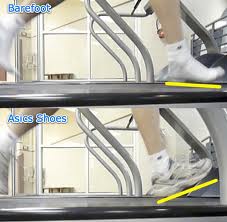 Sarah was fed up with running. Every 8 weeks it was something else. IT Band pain, Piriformis Syndrome, kneecap pain, shin splints...
Each time she thought she was in the clear something else would pop up and derail her training program.
Sarah was fed up with running. Every 8 weeks it was something else. IT Band pain, Piriformis Syndrome, kneecap pain, shin splints...
Each time she thought she was in the clear something else would pop up and derail her training program.
She was concerned that she'd lose fitness by taking time off from running so, being a typical Type A, she would wake up extra early to cross-train on the bike or in the pool while the injury healed.
I admired her commitment and her consistency.
Then I let her in on a little secret. It's one many Physical Therapists won't want to admit.
The biggest risk factor for future injury is prior injury. (Macera et. al. 1989)
Now, if you're a PT, that may be kind of insulting. It's saying that you may have treated the injury, but the very same runner is likely to return to your office with another injury. Hmm.
Of course, I don't mean to dump all over the PTs out there because some of them have evolved with the times and are starting realize the value of functional assessment. But sadly, many haven't. In addition, insurance companies may not care about preventing future injury!
The point is, just because you are out of pain, doesn't mean you should return to training. Why did you get hurt in the first place?
By simply cross-training around the injury, Sarah wasn't reducing her risk for injury at all. She was caught in an injury cycle and there would be no escape unless something changed.
“In order to change behavior, you've got to change perception”
I find myself repeating this profound quote rather frequently. Although you can apply it to nutrition, marketing, children and beyond, you can also apply it to human movement.
The quote comes up when I'm explaining how incorporating a small dose of barefoot activity can help someone begin to escape the dreaded injury cycle.
When you realize that movement is behavior you realize that if you simply change the perception of that movement, then you can change the behavior of that movement.
In Sarah's case, her running stride simply behaved inappropriately when bound by a thickly cushioned running shoe.
The built up heel pad shifts her weight anteriorly making her use her quads more and her butt less.
The thick cushioning deprives her feet, an amazing sensory organ, of critical information as to which muscles to activate just prior to impact.
 Watching her run, it was obvious to me her core and glutes simply weren't firing in time to stabilize her leg correctly. Why? Because they had no reason to fire. They weren't getting any information from the foot telling them to do so!
Watching her run, it was obvious to me her core and glutes simply weren't firing in time to stabilize her leg correctly. Why? Because they had no reason to fire. They weren't getting any information from the foot telling them to do so!
The core literally had no idea that a footstrike was about to occur thanks to that huge wad of padding “protecting” her foot. The cushioning may have protected the foot locally, but at a cost globally. Her natural core and hip stabilization never had a chance.
Part of her training homework was to run in place and VERY slowly (1-3mph) for 5 minutes. She was to only do this if she was pain-free (she was) and not to do any other running.
Will that work for everyone? I don't think so. Her fundamental movement patterns were clean. Are yours? She had mobility in all the right places and could control movement in all the right places. Can you?
The only thing holding her back was her running technique or, as you now know, her perception.

